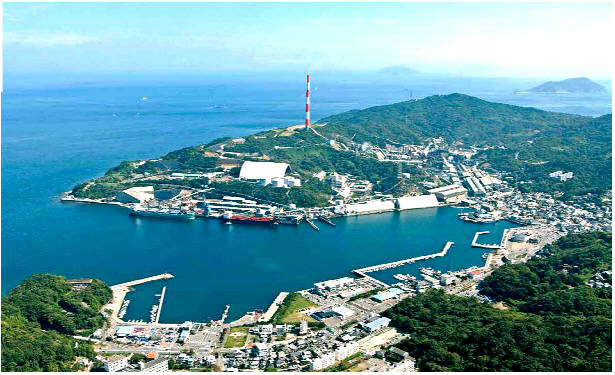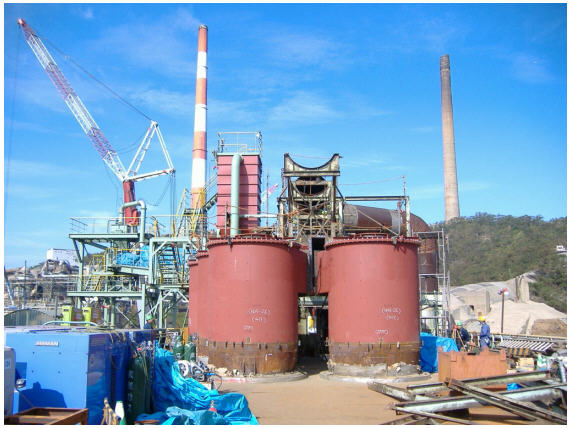Figure 2 shows the two large stacks for the emission of cleaned off-gas. Two years ago, the old stack on the right was dismantled after the left stack was remodeled to handle the same quantity of gas as originally handled by the two stacks. The old stack on the right was 96 years old and 167 meters in height.
Improvements made to increase the FSF availability
Many improvements were made to increase the FSF availability. The main improvements were:
- optimization of the gas flow inside the waste heat boiler that reduces the problem of dust accumulation and the erosion rate of tubes
- material improvements for waste heat boiler tubes that reduce the corrosion of tubes, and
- reinforcement of the FSF settler cooling system.
We attempted to extend the shutdown interval from 1 to 2 years in response to the relaxation of regulations for the legal inspection of the waste heat boiler and oxygen plant. The most serious problem in extending the shutdown interval related to the refractory service life of the settler, especially in the area underneath the reaction shaft. The cooling effect of the existing cooling jacket was limited and almost all the refractories of the settler underneath the reaction shaft were lost after 1 year of operation. To extend the service life of refractories, several types of water-cooled jackets were tested. Consequently,we found that a jacket with zigzag-aligned cooling tongues could cool the brick from five different directions and extend the brick service life by more than 4 years.
Water-cooled jackets were replaced with modified jackets as a multi-year project beginning in 2009, and the refractory service life was thus extended substantially. We subsequently extended the shutdown interval from 1 to 2 years beginning in 2011. The biannual shutdown scheme increased the FSF availability and new copper production by about 3%.
Conclusion
The availability and productivity of the Saganoseki Smelter were improved by making many modifications. However, the commercial environment in which custom smelters operate has become increasingly severe in recent years. To survive in this environment, the Saganoseki Smelter will need to make continual efforts to improve performance.

